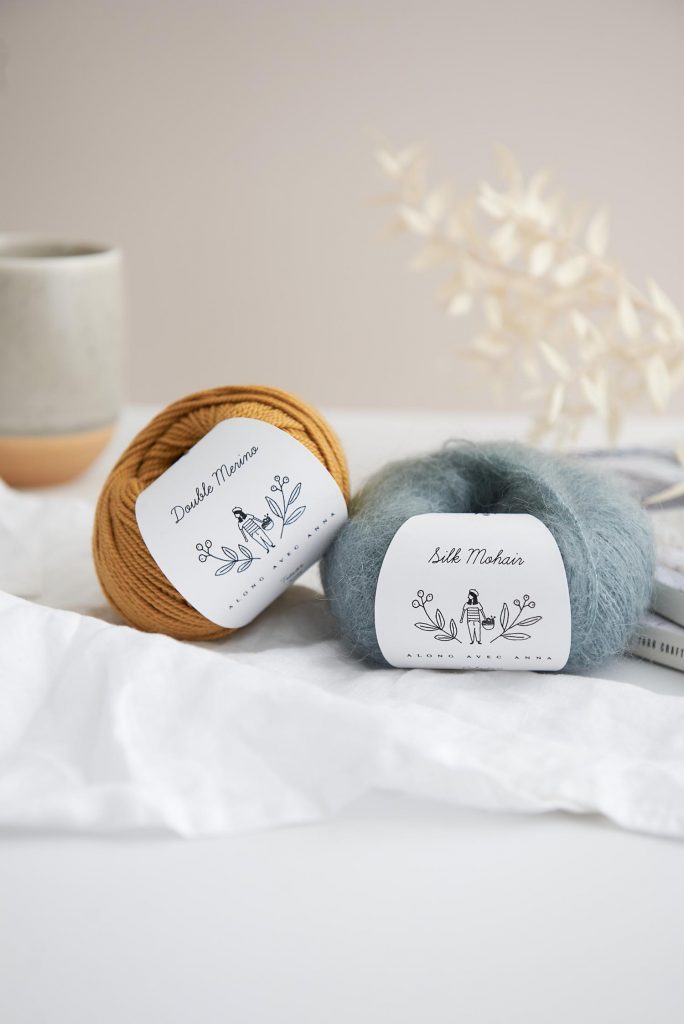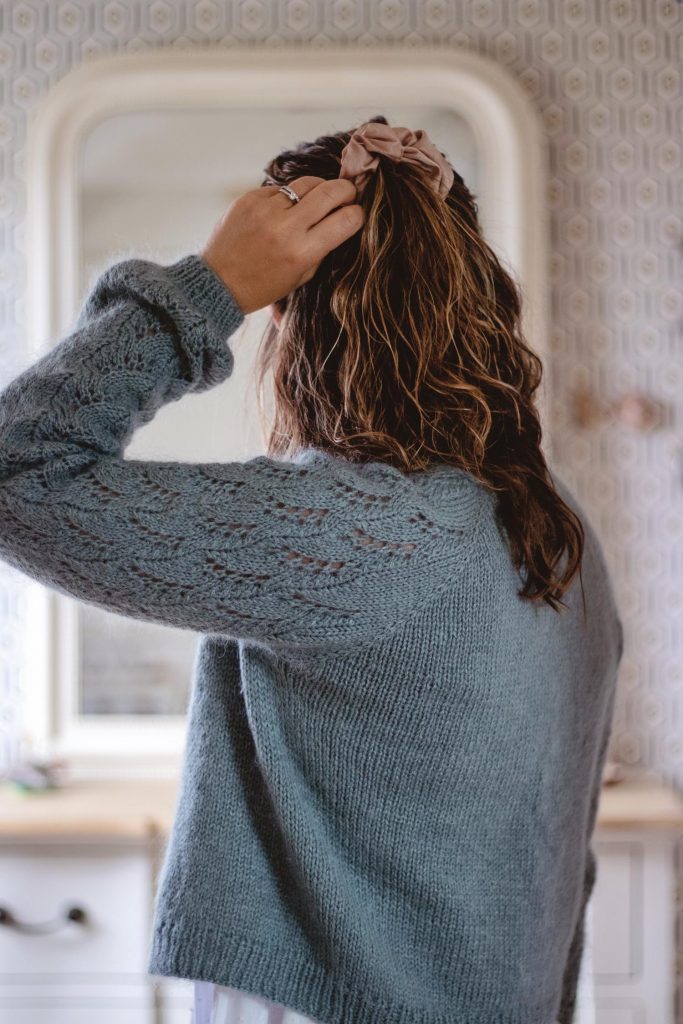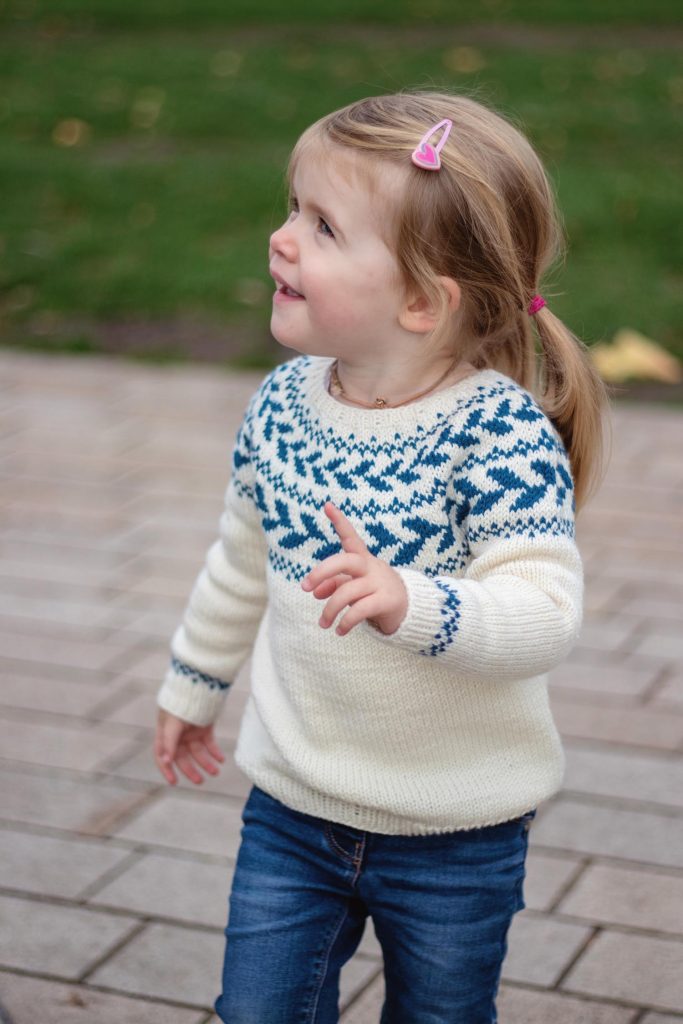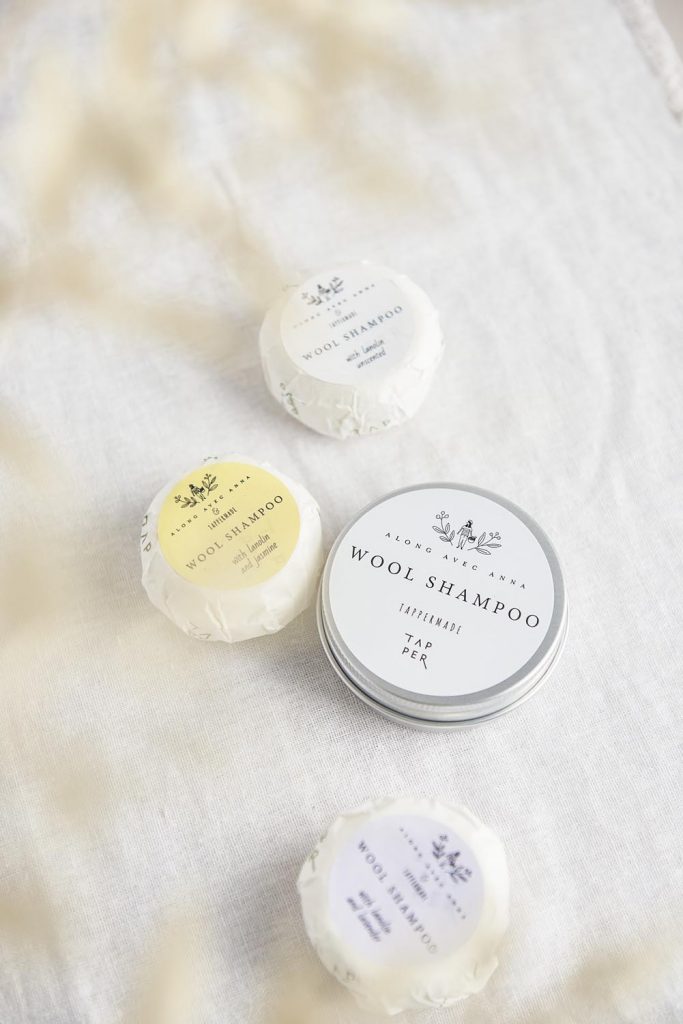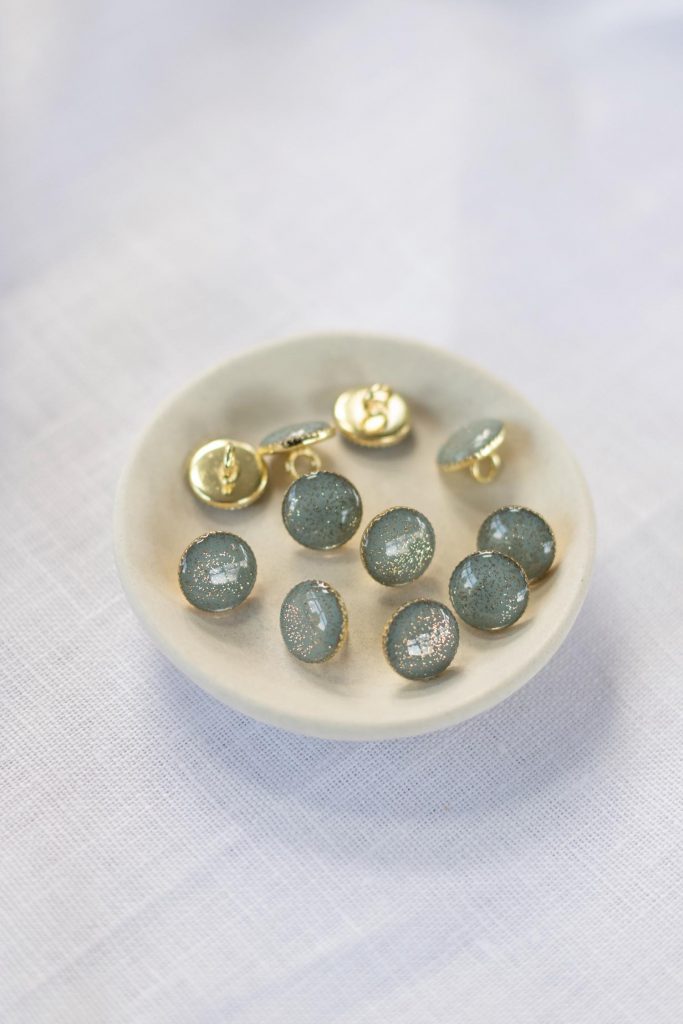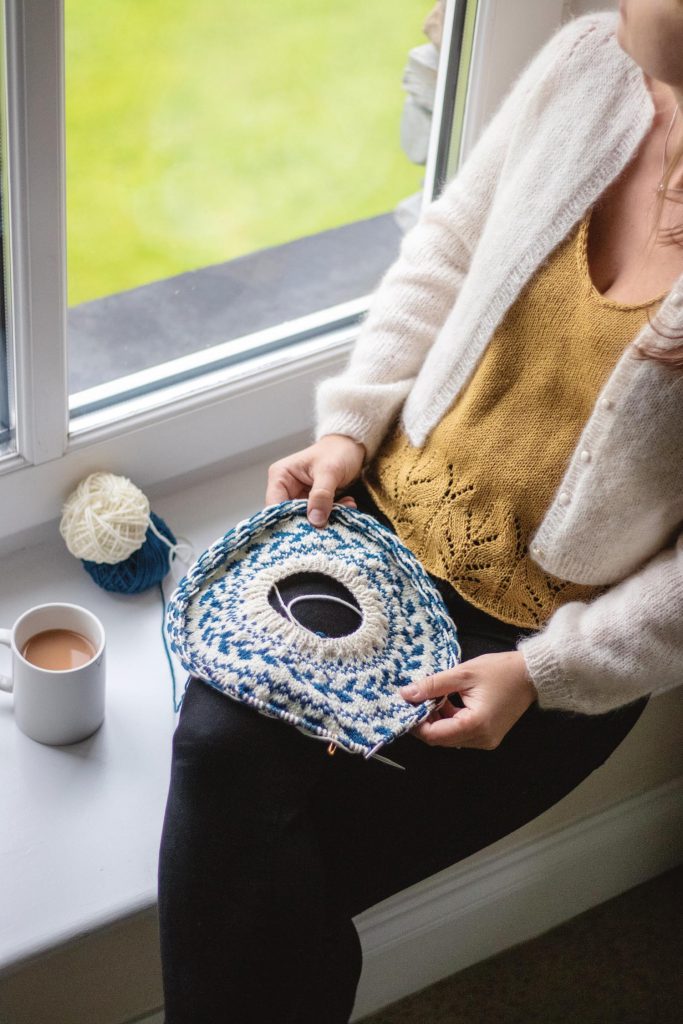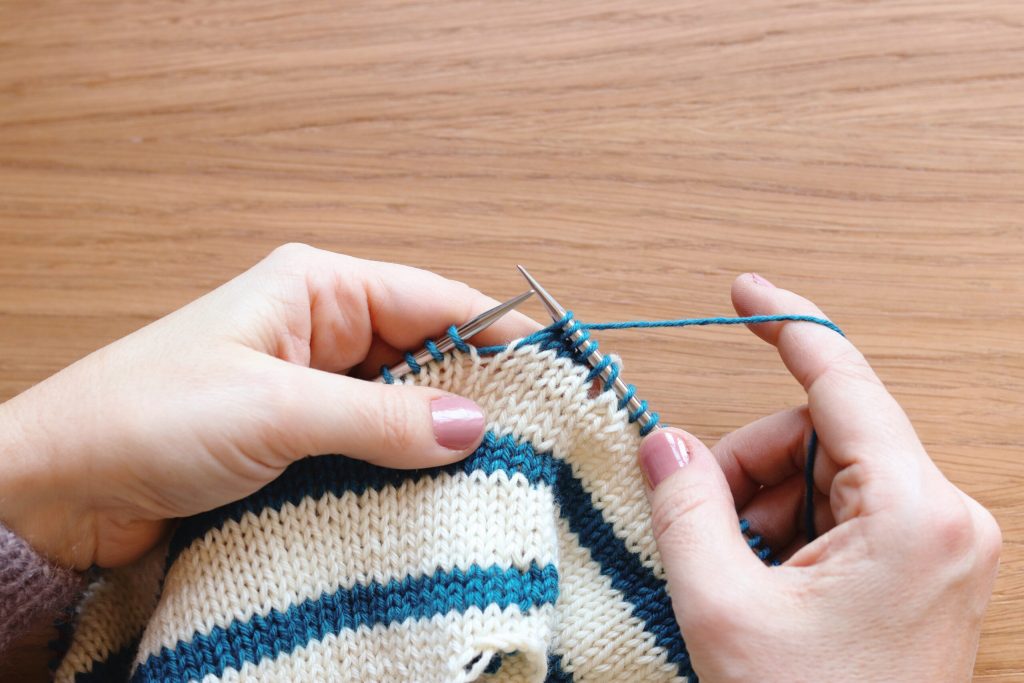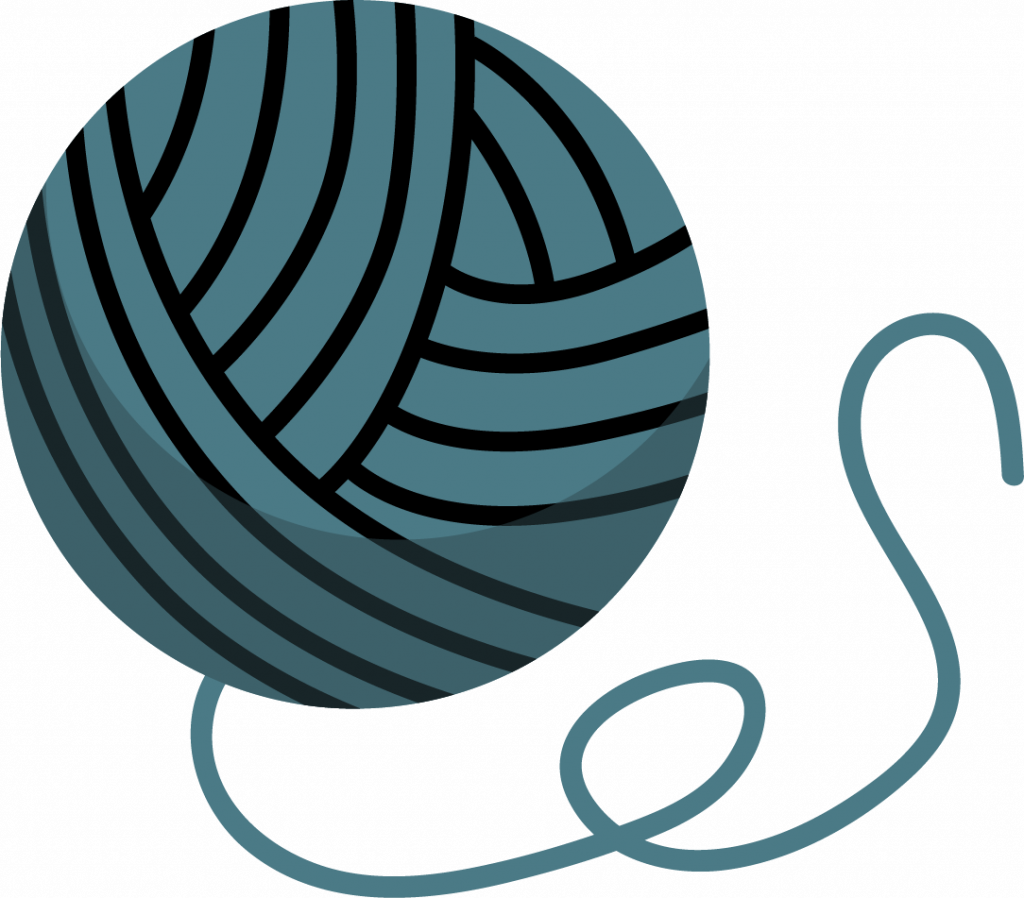In a wardrobe, there are always certain staples. And no, we are not talking about the little black dress (unless it is knit in garter stitch?). Today we are going to talk about the famous Breton Jumper.
It’s a piece of clothing that never goes out of fashion. I dare you to check the parents’ old photos and not to come across a shot of their younger years, with at least one person in the pic not wearing this famous sweater (at least this is the way it is in France!). And the funny thing is that since those famous 70s, it has remained a hit in all collections and all seasons, from ready-to-wear to haute couture.
At Along with Anna, we just had to continue the tradition! Especially since Anna even grew up by the sea in Brittany!
Anna experimented with stripes in the Charlie’s day set cardigan, the Tavy sweater, and even the Brest sweater, but it’s really the Clovelly sweater that wins the prize, ticking all the boxes for the perfect Marinière: the stripes, the button band on the shoulder, a round neck, and if you’re a purist, the choice of colors. You’ll find this beautiful pattern in her book Tricoter en couleurs (not yet available in English).
But where does the Marinière come from?
If I was joking, I would answer right away: from Nantes, in Brittany of course! (It’s a prrivate joke that Bretons will understand.) I’m joking, but the truth is not very far from it…
As its name suggests, the Marinière therefore has its origins in the maritime world. In the 17th century, Breton sailors wore a striped knit (the original name of the marinière) under their Vareuse (a very thick and robust cotton blouse). It is actually an underwear jersey top worn for warmth, in direct contact with the skin. Popular among simple sailors, the striped knit quickly joined the ranks of the French Navy and became a key element.
What about the stripes in all of this?
The origin of the stripes has been widely commented on and several leads emerge:
- It could be a sign of low social class (at first glance it was a pattern reserved for prisoners, prostitutes, in short, quite a world away…)
- It might have been from weaving fabrics specific to the time, striped to vary a little from the plain motifs while saving a little on colour.
- It could even be to make the sailors more visible if they fell overboard!
What’s for sure is that, in the Navy order is paramount, so the style was institutionalised: 21 indigo stripes on a white background for the body (for Napoleon’s 21 victories it seems) and 14 for the three-quarter length sleeves.
The blue stripes should be twice as thin as the white stripes (I’m sure you’ll be counting each row carefully on the Clovelly).
From the Navy to the podiums…
From military stripes, it was taken up in the world of French fashion with Coco Chanel, Yves Saint-Laurent, Jean-Paul Gaultier, Karl Lagerfeld. The marinière also became the emblematic product of famous French textile brands, such as Armor-Lux (Brittany) and Saint James (Normandy). Even the French Navy has launched its own brand! (Dare I say they are riding the wave?)
Also the materials and the uses vary. The striped knit is worn proudly now, it is no longer hidden under another main garment, it becomes thicker and turns into a sweater: the sailor sweater (pull marin).
Shoulder buttonholes appear more likely when used in ready-to-wear clothes, to include more crew-neck garments.
A matter of style, more than a matter of gender…
One of the keys to the success of the marinière? It is completely gender neutral! French cinema also takes got ahold of it with icons at Godard such as Brigitte Bardot in Le mépris, and my favorite Jean Seberg in À bout de souffle.
The marinière is found everywhere: Pablo Picasso adopted it, the mime artist Marceau made it his uniform, Where is Charlie wears it in a red striped version, etc. It can be found in all colours and fashions from the timeless brand Petit Bateau and Gap, but also for an limited time the French football team’s shirts… there’s truly something for everyone.
Regardless of the type, the Marinière has always been a means of expression, whether it is a tool for the emancipation of women (isn’t it basically an exclusively male garment), for recognition of military power, or also of popular recognition (the sailor as an anti-bourgeois symbol)…
In knitting more especially, you can play with the ease, the general shape, the details and above all choose the colours that look like you and that speak to you… So would you go for classic or more unusual? Blue stripes on a white background for tradition, or will you dare go the opposite way and add a touch of originality?
Perrine



